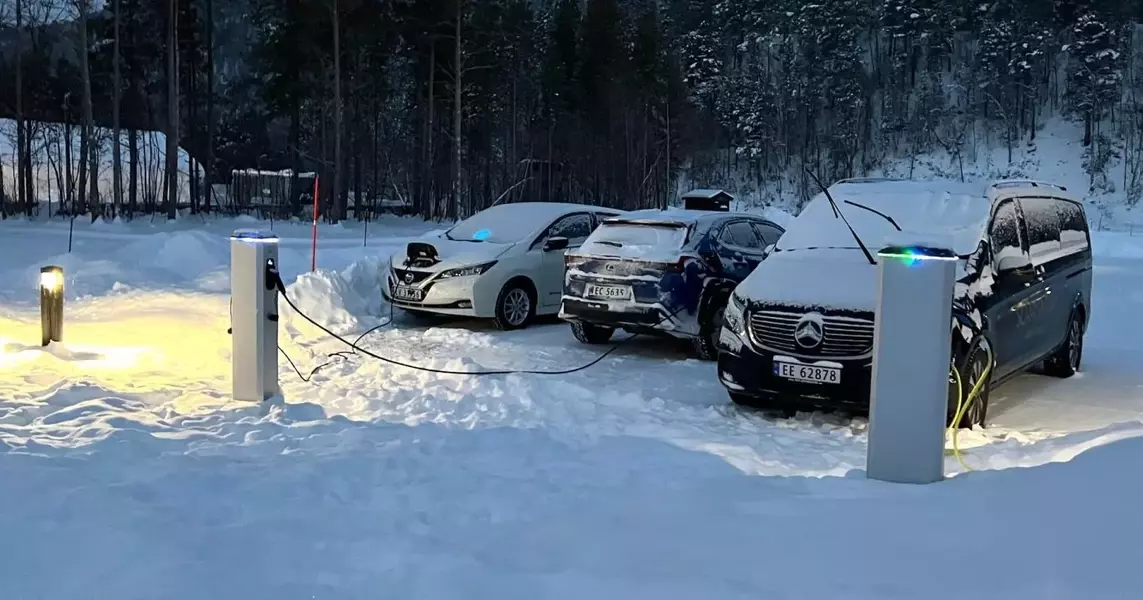Norway's Electric Vehicle Revolution: Leading the Charge Towards a Greener Future

In 2024, Norway achieved an unprecedented milestone in electric vehicle (EV) adoption, with 88.9% of all new car sales being fully electric. This remarkable progress, up from 82.4% in 2023, underscores Norway's commitment to phasing out gasoline-powered vehicles by 2025. The country's electrification efforts extend beyond pure EVs, with plug-in hybrids capturing an additional 2.7% of the market and conventional hybrids accounting for 5.3%. Only a small fraction—3.1%—of new vehicles were diesel or petrol-only. Despite reducing incentives, Norway has maintained its upward trajectory in EV adoption, unlike other European countries like Germany. The shift is not only evident in new car sales but also on the roads, where EVs now make up 28.6% of the total vehicle fleet.
The Dominance of Electrified Vehicles in Norway's New Car Market
Electric vehicles have become the dominant force in Norway's new car market, driven by government policies and consumer preferences. In 2024, nearly 90% of all new cars sold were either fully electric or plug-in hybrids. This surge in EV adoption reflects a broader trend toward sustainable transportation, as consumers increasingly opt for greener alternatives. Even with the reduction of incentives, the momentum behind EVs remains strong, thanks to the established benefits of lower taxes and favorable perks for electric car owners. The automotive industry has responded by phasing out non-electric models, recognizing that the demand for traditional combustion engines is waning.
The success of Norway's EV revolution can be attributed to a combination of factors. First, the government's strategic policies have played a crucial role in making EVs more attractive. High taxes on gasoline vehicles, coupled with incentives for EV buyers, have shifted the market dynamics in favor of electric cars. Second, the infrastructure for charging stations has expanded rapidly, with major gas station chains like Circle K planning to install as many chargers as fuel pumps within three years. This infrastructure development ensures that EV owners have convenient access to charging points, further boosting confidence in electric vehicles. Lastly, the public's growing awareness of environmental issues has fueled the demand for cleaner transportation options, leading to a cultural shift towards sustainability.
Challenges and Opportunities in Norway's EV Transition
While Norway's transition to electric vehicles has been overwhelmingly successful, there are still some challenges to address. One notable holdout is the rental car sector, which continues to import internal combustion engine (ICE) vehicles primarily for tourists unfamiliar with EVs. This segment represents a small but significant portion of ICE car sales, highlighting the need for better education and support for international visitors. However, this challenge is likely to diminish as EV infrastructure improves and global familiarity with electric vehicles grows. Moreover, the rapid decline in fossil fuel sales and the expansion of charging networks indicate that it won't be long before tourists find it easier to charge an EV than to refuel a gas car.
Looking ahead, Norway's EV journey serves as a model for other nations aiming to transition to sustainable transportation. The country's experience shows that with the right policies and infrastructure, the shift to electric vehicles can be both swift and effective. Norway's success also dispels common misconceptions about the challenges of high EV adoption, such as grid stability and performance in cold climates. The evidence suggests that electric vehicles not only work well in diverse conditions but also contribute to quieter, cleaner, and more enjoyable urban environments. As other countries evaluate their own strategies, they would do well to learn from Norway's achievements and adapt similar approaches to accelerate their own green transitions.